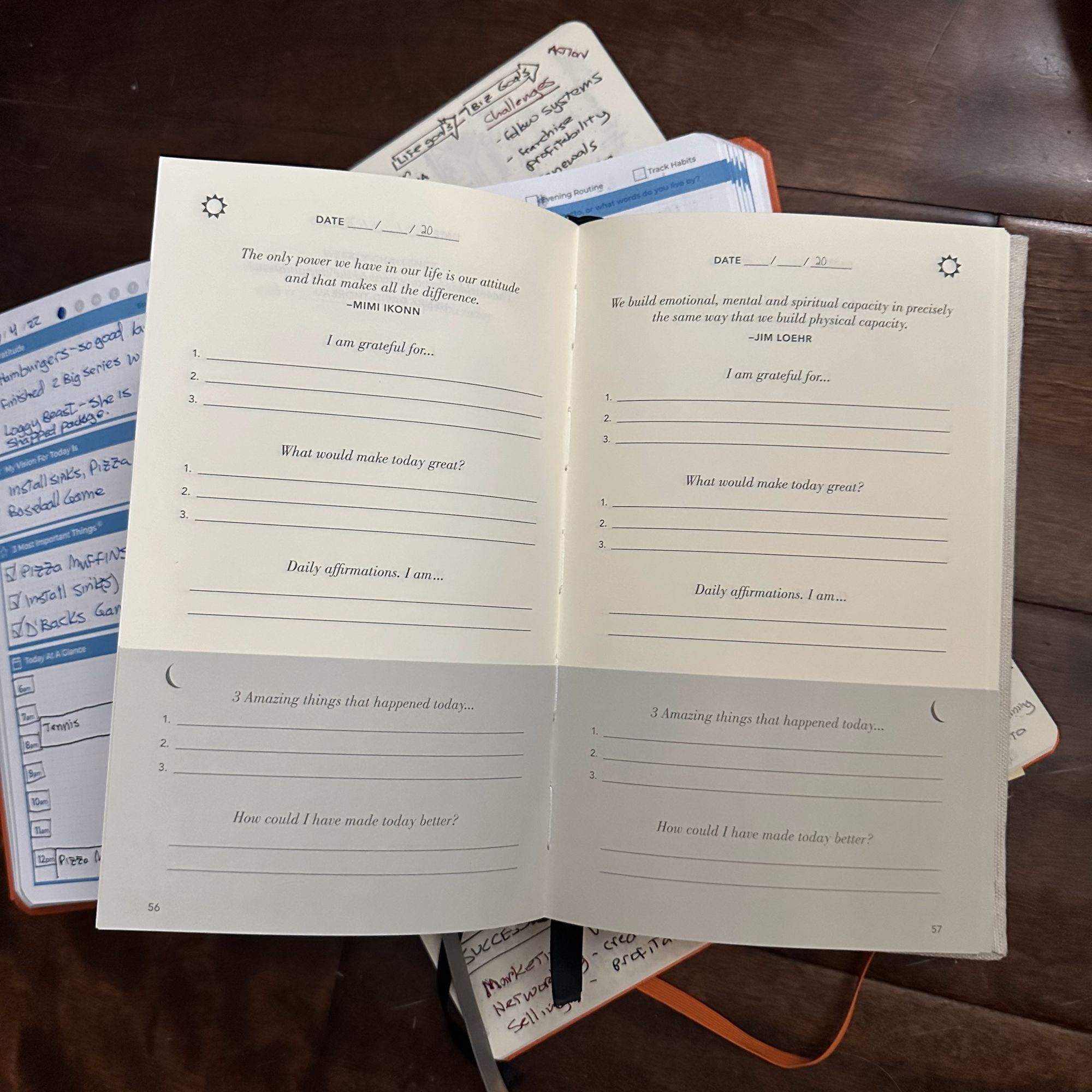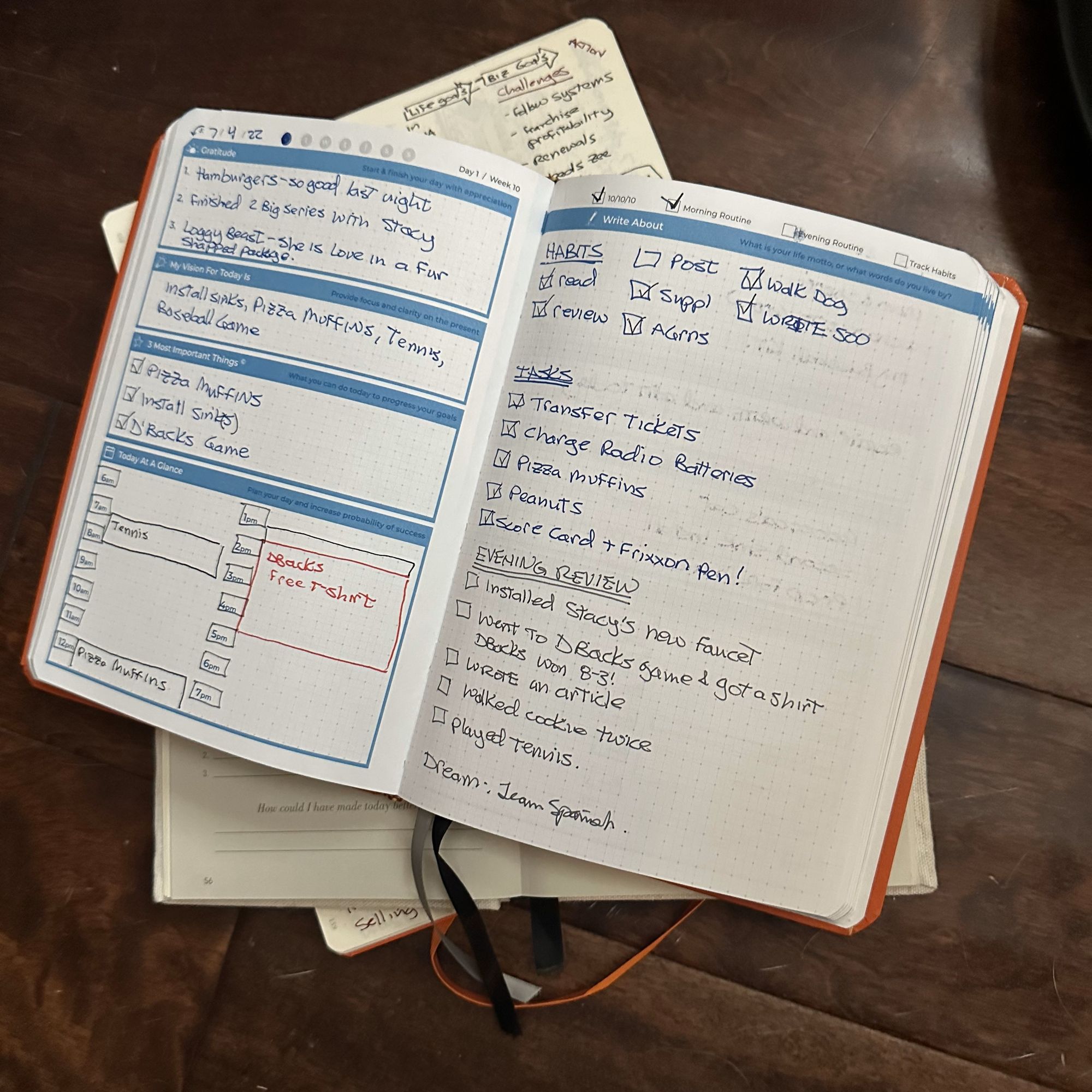The Power of Journaling
Hey there! Today, I want to continue my dive into the world of journaling. I've talked about Morning Pages and Expressive in previous posts —both are unstructured forms of journaling. But let's focus on something a little different today; let's talk about structured journals.
Now, I'm a big fan of structured journals, particularly two that have made quite an impact in the journaling community. The first one is The Five Minute Journal, which was actually inspired by a Tim Ferriss podcast episode. This journal provides structure at the beginning and end of each day—acting as bookends for your daily journey. Another popular option is the Oak Journal created by my friend Keith Roberts through a successful Kickstarter campaign. It takes the concept of framing your day to another level—it's like having a 90-day guide for life!
So, let's start with The Five Minute Journal because it holds one particular feature that resonates deeply with me—the gratitude practice. Each page in this journal represents a single day where you begin by reflecting on three things you're grateful for in the morning section.

But here's my tip to keep your gratitude practice fresh: instead of listing generic blessings like family or health every time, try these three tips to improve your gratitude.
First, focus on a specific individual who has done something nice for you—a friendly cashier at your local grocery store or someone from work or even an organization where you volunteer. By visualizing these people and acknowledging their positive influence in your life, you cultivate genuine appreciation.
Next look forward—in other words, find opportunities within your future that excite you! Whether it's an upcoming trip or an interesting challenge at work—an opportunity that piques your curiosity—we all need some optimism when we think ahead.
Finally —and personally my favorite—is recognizing gratitude in the present moment. Take a look at your immediate environment and pinpoint something you're grateful for—it could be as simple as having a great cup of coffee or the pen you're writing with. By grounding ourselves in the present, we connect all three phases of our lives—past, future, and now—with gratitude. Each one of those can fill a slot in your gratitude trio.
Now, let's move on to setting priorities for the day. Jay Papasan, author of "The One Thing," emphasizes that effective to-do lists should be short but meaningful. Think about what you really want to accomplish today—the things that truly align with your intentions and goals.
As our days come to an end, it becomes a little trickier because no two days are ever alike—they each conclude differently. This is where many struggle with closing their day through journaling; I'm candid enough to admit that it has been challenging for me too. But if you can do it consistently, summarizing your achievements or lessons learned from the day can make all the difference.
There's this philosophy I once heard from a friend who spoke to his wise 98-year-old grandfather—he asked him about the secret to living a good life. And his response was simple yet profound: "Good days." He believed that chaining together enough good days would lead us towards building a good week—a good month— a good year — and ultimately crafting a good life.
That's why taking note of daily successes while framing our mindset towards tomorrow is so valuable! It's just unfortunate how often consistency eludes us—I know I struggle with it myself!
Now let's shift gears and explore another structured journal—the Oak Journal—which takes everything up several notches! With this powerful tool, you have an opportunity not only to set goals for yourself but also track progress over an entire quarter! Talk about commitment!

You see, establishing new habits isn't as straightforward as some claim—in reality, habit formation varies greatly among individuals ranging anywhere from 21 days up until 120 days. The measured average, however, is around 66 days. So dedicating a quarter—90 days—to establish new routines and practices in your life proves to be the sweet spot.
One of my favorite aspects of the Oak Journal is the small calendar at the bottom—it may seem redundant with digital calendars being so prevalent these days, but there's something remarkable about sitting down and reviewing your day in a tangible manner. It brings focus and clarity to where you need to be and what you expect from yourself.
Remember, whether you choose The Five Minute Journal or the Oak Journal—or any other structured journal for that matter—the key lies in creating simple rules for yourself through consistent practice. With gratitude as our foundation and intention-setting as our compass, we can put ourselves in positions to cultivate better thinking—leading us towards better results!
So go ahead! Give journaling a try—it might just become the game-changer you never knew you needed! I hope this blog post helps clarify how structured journals like The Five Minute Journal and Oak Journal can enhance your productivity levels while fostering gratitude within your everyday life. Remember, it's all about finding what works best for you!
Moral of the story? Managers produce results while leaders cultivate better thinking—which ultimately leads to better results.




